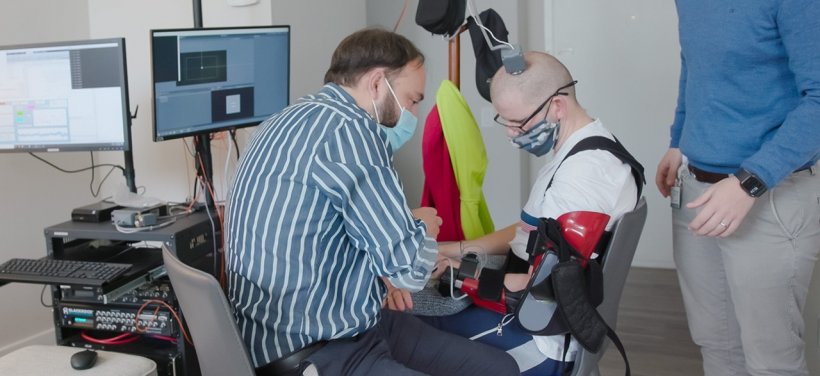Patients with severe neurological conditions, such as amyotrophic lateral sclerosis (ALS), may soon have a new way to communicate with their loved ones, thanks to advancements in generative AI technology.
Last week, neurotechnology company Synchron announced a groundbreaking integration of OpenAI’s technology into its brain-computer interface (BCI) program. This integration will allow users with severe motor impairments to send more contextually aware messages using their thoughts.
By leveraging OpenAI’s multimodal GPT models, Synchron’s interface can generate context-aware responses when a patient receives a text or is spoken to, facilitating more “natural” and real-time human-AI interactions.
In a video released by Synchron, Mark, a patient suffering from severe ALS, is shown using the BCI to reply to text messages from his doctor. Through a ChatGPT-enabled platform, Mark is able to converse with his doctor, arrange appointments, and describe his pain levels—all using his mind.
Synchron explained that this feature is designed primarily for patients with severe paralysis who have lost the use of their upper limbs, enabling them to interact hands-free with the world around them.
“This is critical for individuals with neurological disorders, who may otherwise have trouble generating complex responses contextual to their environment,” Synchron stated.
Mark, who uses Synchron’s BCI platform, expressed optimism about the technology: “As someone who will likely lose the ability to communicate as my disease progresses, this technology gives me hope that in the future I’ll still have a way to easily connect with loved ones. This will be a game changer.”
Founded in 2012 and backed by tech billionaires Bill Gates and Jeff Bezos, Synchron is developing an implant that allows people to interface with computers and other technology, similar to Elon Musk’s Neuralink. However, Synchron’s BCI boasts a “minimally-invasive” surgical procedure. The tiny device is inserted via the jugular vein in the neck and moved to a blood vessel on the surface of the motor cortex of the patient’s brain.
Once implanted, the device wirelessly detects and transmits “motor intent” from the brain, allowing paralyzed users to control devices with their minds.
In contrast, Neuralink’s brain chip requires a surgical procedure that involves opening a small section of the patient’s skull and using a surgical robot to implant the device in the region of the brain that controls movement intention.
On May 13, Neuralink unveiled footage of its first human patient, 29-year-old quadriplegic Noland Arbaugh, controlling a computer cursor and playing games like Civilization V using only his mind.




